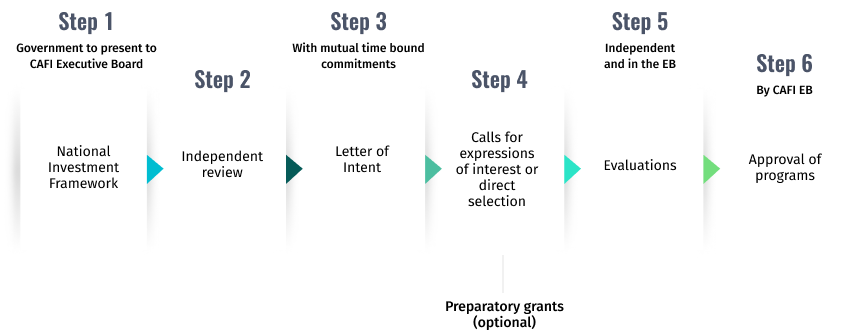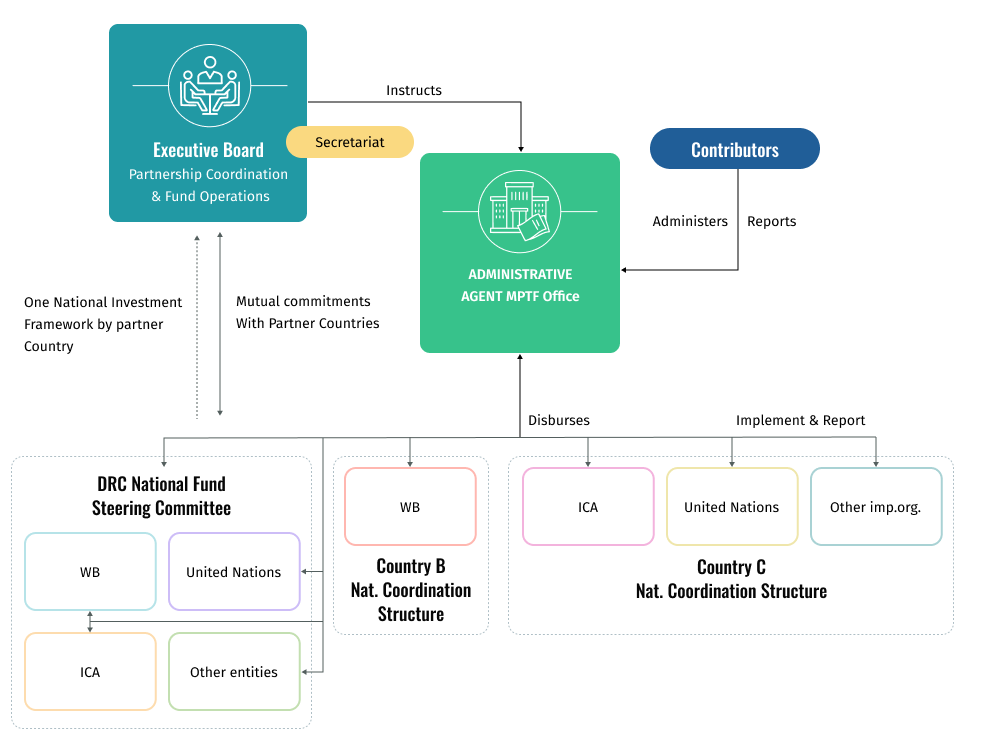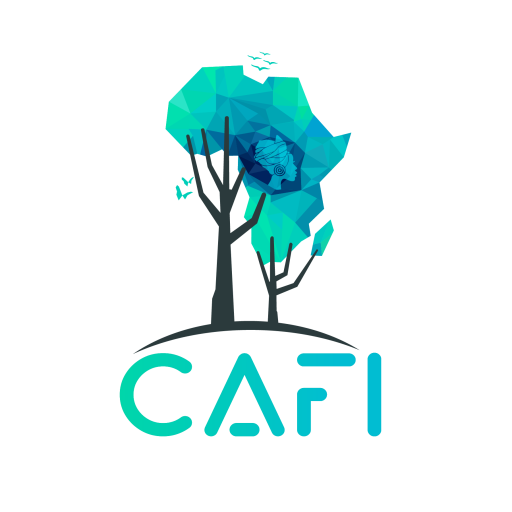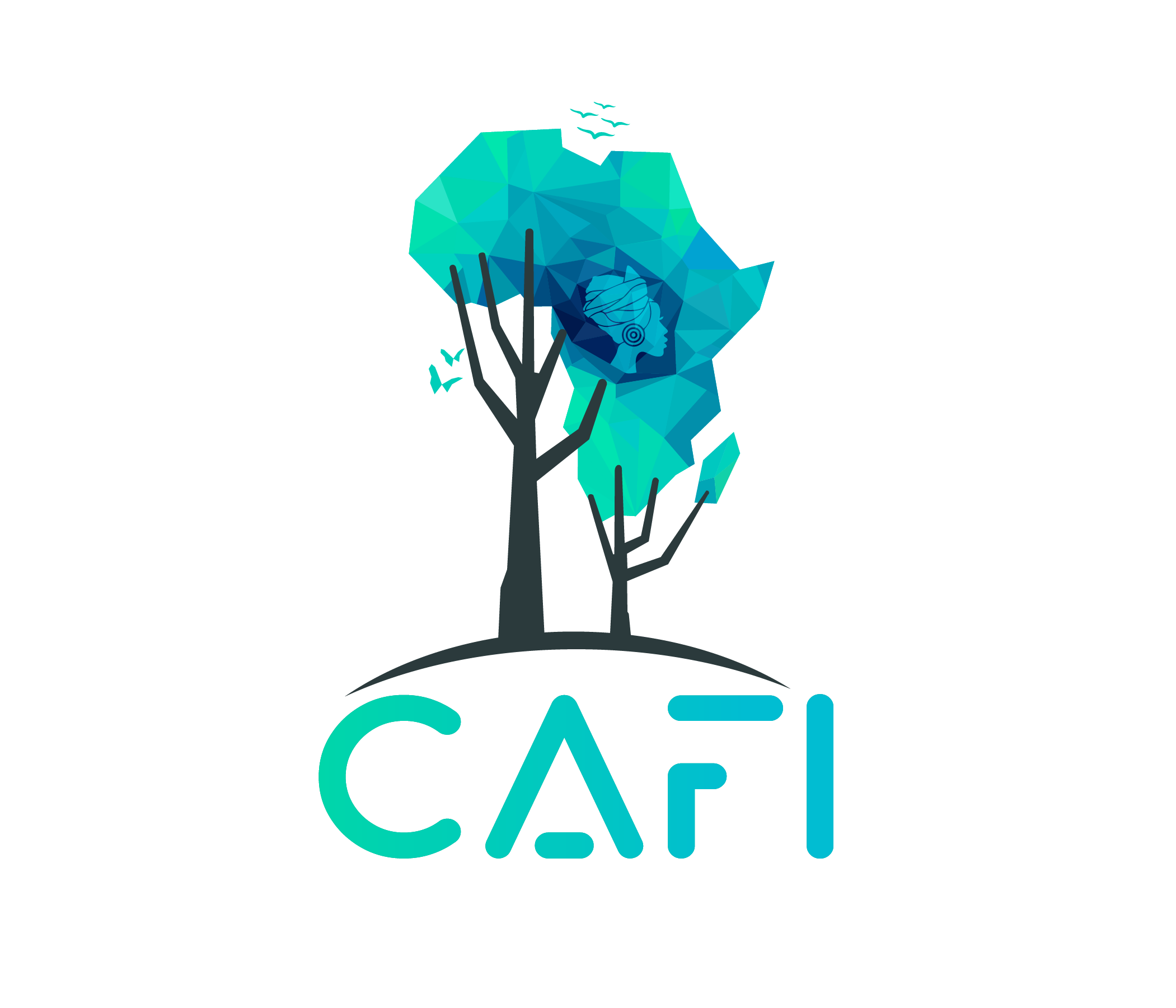CAFI Overview
Lorem ipsum dolor sit amet, consectetur adipiscing elit. Vivamus massa sem, ullamcorper in lacinia vel, congue nec erat. Cras finibus vestibulum arcu, in interdum erat ullamcorper et. Nam eros tellus, dictum rutrum sapien sed, volutpat hendrerit dolor. Suspendisse in vestibulum sem.
How we work
CAFI collaborates with its partner countries through a series of phases
- Partner countries develop and present their national investment frameworks, addressing all drivers of deforestation and forest degradation.
- Following a review of the national investment framework, the CAFI Executive Board (EB) agrees to support certain policy reforms and large scale programs.
- Through a Letter of Intent (such as the ones concluded with the DRC, Gabon and the Republic of Congo) the CAFI Executive Board and the Government of the partner country, represented by a government institution with inter-ministerial coordination mandate, agree on objectives and timebound targets in policy reform and programmatic performance (called “milestones”). They also agree to the corresponding financial support by CAFI, some of which (called tranches) depending on progress towards milestones.
- Partner countries develop and implement programs to achieve the milestones in the Letter of Intent with the support of implementing organisations.
- Throughout the process, CAFI maintains a high-level policy dialogue with the Government of partner countries.

Transparency and accountability
CAFI recognizes the importance of and reaffirms its commitment to transparency and accountability in all aspects of its operations in fulfilling its mandate. CAFI will ensure the highest standard of transparency in all its activities through the effective dissemination of information to stakeholders and the public at large. Annex 1 of CAFI’s Manual of Operations describes its information disclosure policy, through which CAFI recognizes the need to ensure public access and stakeholder participation in fulfilling its role.
Any person negatively affected or impacted by a program financed by the Fund may lodge a complaint. CAFI’s complaints management mechanism is based on the principles of subsidiarity, legitimacy, accessibility, foreseeability and transparency, and described in Annex 2 of CAFI’s Manual of Operations. Whistle blower protection is provided for in Annex 3 of the CAFI’s Manual of Operations, and further detailed here.
Governance and Management
- The Executive Board, supported by the CAFI Secretariat, is responsible for partnership coordination with CAFI Partner Countries and decisions regarding the allocation of resources from the CAFI Fund.
- The Multi-Partner Trust Fund Office is responsible for administering the CAFI Fund.
Implementing organizations (UN agencies, the World Bank, International Cooperation - Agencies and international non-governmental organisations) and national governments implement activities.
Any person negatively affected or impacted by a program financed by the Fund may lodge a complaint. CAFI’s complaints management mechanism is based on the principles of subsidiarity, legitimacy, accessibility, foreseeability and transparency, and described in Annex 2 of CAFI’s Manual of Operations. Whistle blower protection is provided for in Annex 3 of the CAFI’s Manual of Operations, and further detailed here.


